Cleaning Up Superfund Sites: Highlights of Bipartisan Infrastructure Law Funding
The Bipartisan Infrastructure Law invests $3.5 billion in environmental remediation at Superfund National Priorities List sites and reinstates the Superfund chemical taxes, making it one of the largest investments in American history to address the legacy pollution that harms the public health of communities and neighborhoods.
- How EPA is Using Infrastructure Funding
- Find Infrastructure Funded Projects Near You
- Status of Funds
- Frequently Asked Questions
How EPA is Using Infrastructure Funding
EPA is dedicating the vast majority of the $3.5 billion to EPA-financed remedial action construction projects at non-Federal National Priorities List sites. EPA is using Infrastructure funds to clear the backlog of 49 previously unfunded sites, start new construction projects when they are ready, and accelerate ongoing cleanups at NPL sites. Since passage of the law, EPA has been preparing NPL sites to receive funding and putting the investment to work to ensure communities living near many of the most serious uncontrolled or abandoned releases of contamination get the protections they deserve. Here are a few highlights of what EPA has done with the investment so far:
Lower Darby Creek, Pennsylvania
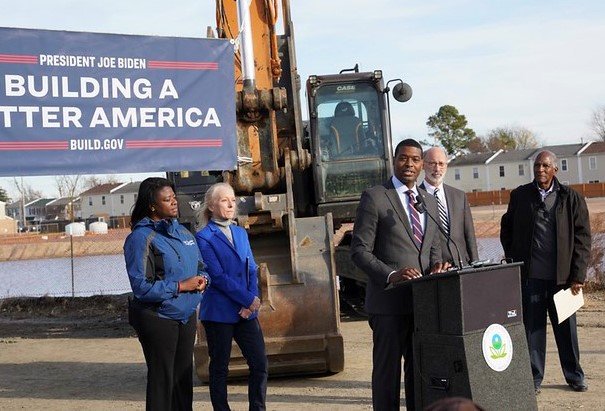
Former Administrator Regan visited the Lower Darby Creek Area site in Pennsylvania, one of the many sites with ongoing work that is receiving a boost from the historic Bipartisan Infrastructure Law funding.
The community near the site has faced long-standing environmental issues due to a very long history of flooding, displacement, hazardous waste dumping by local industry and failed government interventions to remedy these plights.
New Jersey Communities
At the Cornell Dubilier Electronics Superfund site, Bipartisan Infrastructure Law funds are being used to dig up and dispose of PCB contaminated soil and sediment along the length of Bound Brook and its tributaries, allowing the project to continue at pace without interruption.
At the Former Kil-Tone Superfund site, the Bipartisan Infrastructure Law funds will be used to excavate soil contaminated with arsenic and lead from at least 36 properties located in a largely residential neighborhood impacted by the past operations of the former Kil-Tone company, including the former Kil-Tone Company property itself.
At the Unimatic Manufacturing Superfund Site, the funds will be used to demolish the on-site building and excavate PCB and pesticide contaminated soil.
At the White Chemical Superfund Site in Newark, the Bipartisan Infrastructure Law funds will be used to bioremediate groundwater contaminated with volatile organic compounds, specifically trichloroethylene and 1,2-dichloroethane.
New Bedford Harbor, Massachusetts
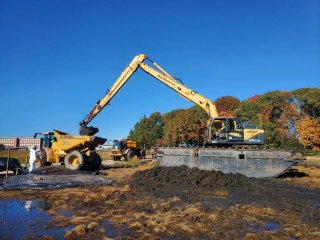
EPA's decades-long work to address PCB contamination in New Bedford Harbor sediments is now on track to be completed in about three years thanks to a major commitment to allocate $72.7 Million from the Bipartisan Infrastructure Law.
Stratford, Connecticut
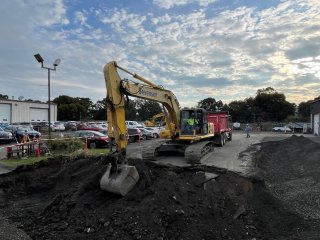
The influx of Bipartisan Infrastructure Law funding for Raymark will help EPA and the U.S. Army Corps of Engineers continue excavating Raymark properties, disposing of waste, and cap the ballfield in a faster, more efficient and coordinated manner.
Brooksville, Maine
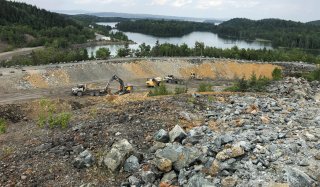
Cleaning up this site is key for the Brooksville community to develop alternatives for potential future uses in this area.
This funding will enable EPA to continue the ongoing cleanup activities and complete the sediment cleanup sooner than anticipated, and in a manner that maximizes use of resources.
Communities in Puerto Rico
At the Pesticide Warehouse III Superfund site in Manati, infrastructure funds will be used to remediate contaminated soil and continue the maintenance and monitoring of existing water treatment systems to ensure that contaminant concentrations in water provided to several industries do not exceed protective levels.
At the Dorado Groundwater Contamination Superfund site funds will be used to cleanup groundwater contaminated with volatile organic compounds, specifically trichloroethylene (TCE) and tetrachloroethene (PCE) and ensure continued protection of the communities in the area and their access to safe drinking water.
Massena, New York
At the General Motors (Central Foundry Division) Superfund site in Massena, NY, Bipartisan Infrastructure Law funds will support the removal of PCB-contaminated soil and contaminated sediments. The site is located upstream of the Akwesasne territory belonging to the Saint Regis Mohawk Tribe. The cleanup will help protect fish and wildlife, traditional food sources, from future contamination.
Montgomery County, Pennsylvania
Because of this infrastructure funding, people living and working in Lansdale and Doylestown can now look forward to these sites finally getting completely cleaned up and ultimately being transformed and reused for the benefit of those communities.
The North Penn site received funding to remove and replace industrially contaminated soil.
The Chem Fab Site received funding to continue construction of a state-of-the-art groundwater extraction and treatment system to treat contaminated groundwater and return it to nearby Cooks Run.
Tampa, Florida
At the Southern Solvents site in Tampa, Florida, Bipartisan Infrastructure Law funds will be used to restore and protect a valuable drinking water resource in the Tampa, Florida area by removing and treating tetrachloroethylene, also known as PCE or PERC and trichloroethylene (TCE) contamination in the soil and groundwater.
Atlanta, Georgia
At the Westside Lead Superfund Site in Atlanta, Bipartisan Infrastructure Law funds will be used to excavate and dispose of lead-contaminated soil at residential properties, including places where children live and play. Young children are at most risk for possible lead poisoning. This funding will allow EPA to address legacy lead contamination and will deliver lasting public health protections for this community burdened by contamination from past industrial activities.
Evansville, Indiana
Bipartisan Infrastructure Law funds are accelerating the cleanup of soil contaminated by lead and arsenic in communities at the Jacobsville Neighborhood Contamination Superfund site. By late December 2023, the influx of funding allowed EPA to complete the cleanup of an additional 187 residential properties with the funding, bringing the total of cleaned up properties to 4,187.
Socorro, New Mexico
Infrastructure funding will allow the remedy to move forward after many years of delays.
The funding will allow EPA to implement the final cleanup plan for removing contaminated soil and construction debris, and installing a pump-and-treat system for contaminated groundwater. The site’s history dates to the 1930s with various uses that left contamination including heavy metals and volatile organic compounds in soils and trichloroethylene and perchloroethylene in groundwater.
Communities in Kansas
At the 57th and North Broadway Streets Superfund site, EPA is collaborating with the Kansas Department of Health and the Environment and Chisholm Creek Utility Authority to cleanup tetrachloroethene (PCE) and its breakdown components in northwestern Wichita. Bipartisan Infrastructure Law funds will be used to install a groundwater extraction-and-treatment system and restore the aquifer as a drinking water source.
At the Caney Residential Yards Superfund site, Bipartisan Infrastructure Law funds will be used to remediate lead contamination at residential properties and other child high-use areas.
At the Plating, Inc. Superfund site, Bipartisan Infrastructure Law funds will support the removal of soil contaminated with hexavalent chromium.
Communities in Montana
Approximately $65 million in Bipartisan Infrastructure Law funding will ensure continued progress in addressing long-standing contamination from former mining activities at the Basin Mining Area, Carpenter Snow Creek Mining District, and Upper Ten Mile Creek Mining Area Superfund sites in Montana.
Carson River, Nevada
With Bipartisan Infrastructure Law funding, EPA will continue to address legacy contamination caused by the historical processing of gold and silver ore with mercury at the Carson River Mercury Superfund site. The mining process released an estimated 14 million pounds of mercury into the environment and resulted in arsenic and lead contamination in certain areas. Cleanup work at the site will continue and strengthen efforts to keep communities safe while helping preserve the area’s rich history.
Amador County, California
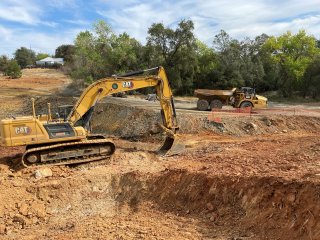
EPA is working closely with our partners at California DTSC and U.S. Army Corps to make sure that the cleanup is protecting the community from contact with hazardous mine tailings and preventing arsenic from running into the local river.
Current cleanup, funded by Bipartisan Infrastructure Law, will excavate 100,000 cubic yards of contaminated tailings and soil. The contaminated soil will be capped, and the cleaned areas will be restored to natural conditions. Stormwater diversion channels will be constructed to divert 86 percent of clean stormwater off the tailings.
Find Infrastructure Funded Projects Near You
The map below shows where EPA has obligated When awarding funding, the U.S. government enters a binding agreement called an obligation. The government promises to spend the money, either immediately or in the future, as work under the obligation is completed. An agency incurs an obligation, for example, when it places an order, signs a contract, awards a grant, purchases a service, or takes other actions that require it to make a payment. Infrastructure funds through fiscal year 2023. For more information about each site, click on the “More Info” link in the map.
Status of Funds
The Bipartisan Infrastructure Law invested $3.5 billion in environmental remediation at Superfund National Priorities List (NPL) sites. The chart below shows the status of Superfund Remedial Infrastructure funds available for site work as of October 1, 2024.
Note: Approximately $3.3 billion is available for extramural site work. This amount does not include costs retained for payroll and travel for EPA personnel supporting EPA Superfund Remedial program activities or other administrative activities. The Agency is providing this data solely for informational purposes.
Report to Congress
The Bipartisan Infrastructure Law requires EPA to submit a report to Congress annually on the status of Superfund Remedial projects funded by the law. This report provides a list of the Superfund NPL sites that received Bipartisan Infrastructure Law funding.
Frequently Asked Questions
How is EPA deciding which sites receive funding?
EPA will be dedicating the vast majority of the $3.5 billion to EPA-financed remedial action construction projects at non-Federal National Priorities List sites.
The sites to receive Bipartisan Infrastructure Law funding are ones that are ready to receive funding for construction and there are no other sources of funding available. Cleaning up a Superfund site is a complex, multi-phase process. Before a site is ready to receive funding for construction projects, EPA evaluates the nature and extent of contamination at a site and assesses the potential threats to human health and the environment. Using this information, EPA evaluates, selects and prepares detailed cleanup plans. Once all those steps have been completed a site is ready to receive funding for construction work. The individual complexity of each site means each site is on its own timeline.
Why isn’t the Superfund site near me receiving funding?
Not all Superfund sites will directly receive funding from the Bipartisan Infrastructure Law. Reasons a site may not receive Infrastructure funds include:
- Other sources of funding are available. EPA continues to find the parties responsible for contamination at a site and negotiate with or order them to do the cleanup themselves, or to pay for the cleanup done by another party (i.e., EPA, state, or other responsible parties). Funds collected from responsible parties for work at sites are used before utilizing Infrastructure funds for response work.
- Infrastructure funding will not be used at Federal Facility sites or sites not listed on the National Priorities List, such as EPA-lead removal sites.
- The site is not yet ready to receive funding for construction work or all construction work is already complete.
What are the Superfund excise taxes?
In addition to providing $3.5 billion for Superfund cleanup, the Bipartisan Infrastructure Law reinstated and modified the Superfund chemical excise taxes on certain listed chemicals and imported substances that use as materials in their manufacture or production one or more of the listed chemicals beginning July 1, 2022 through December 31, 2031.
The Inflation Reduction Act permanently reinstated and modified the Superfund petroleum excise tax on domestic crude oil and imported petroleum products beginning January 1, 2023.
Revenues from the reinstated Superfund chemical and petroleum excise taxes are to be used to carry out the Comprehensive Environmental Response, Compensation and Liability Act.
